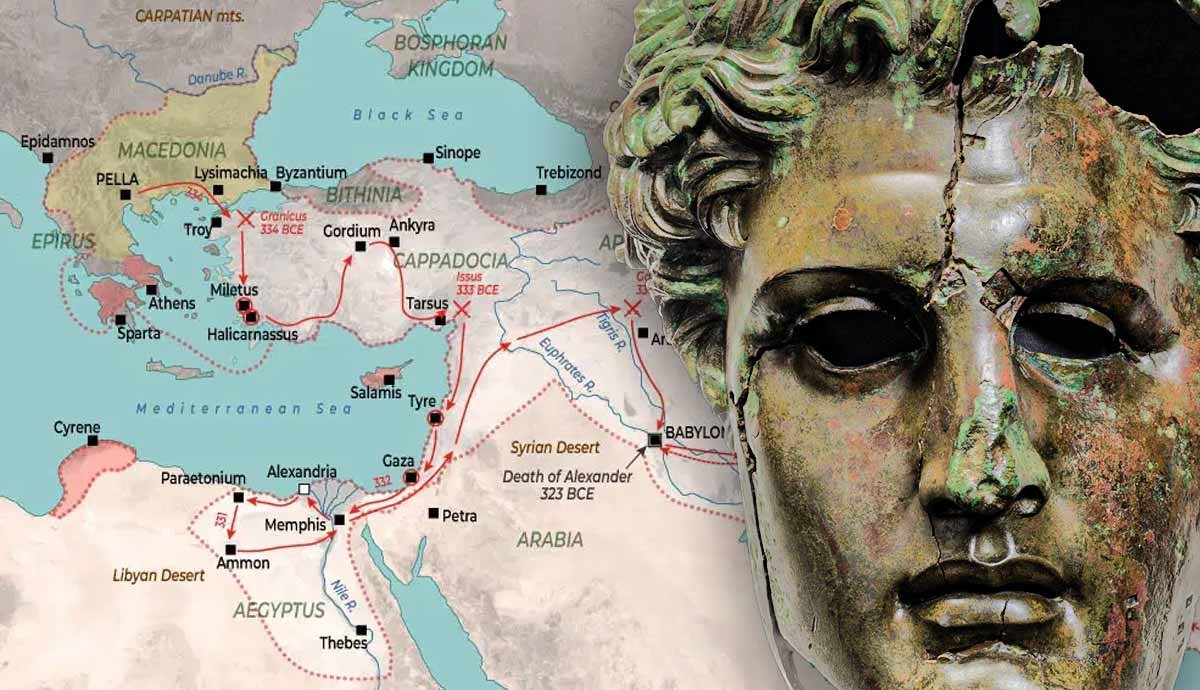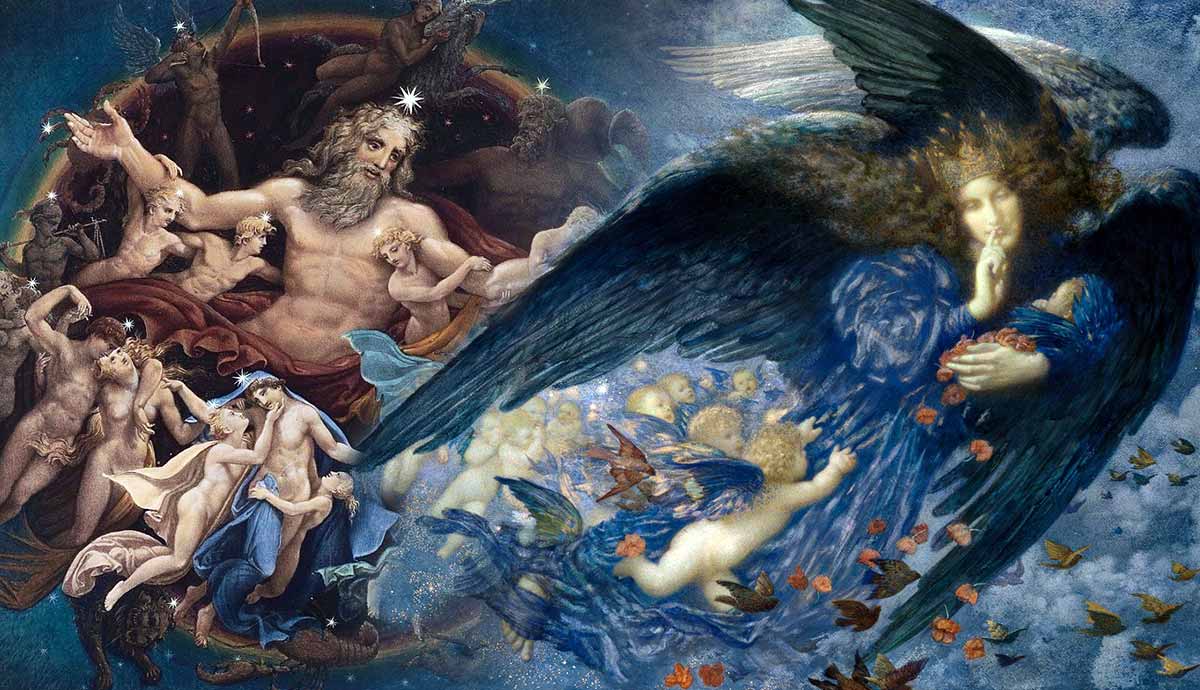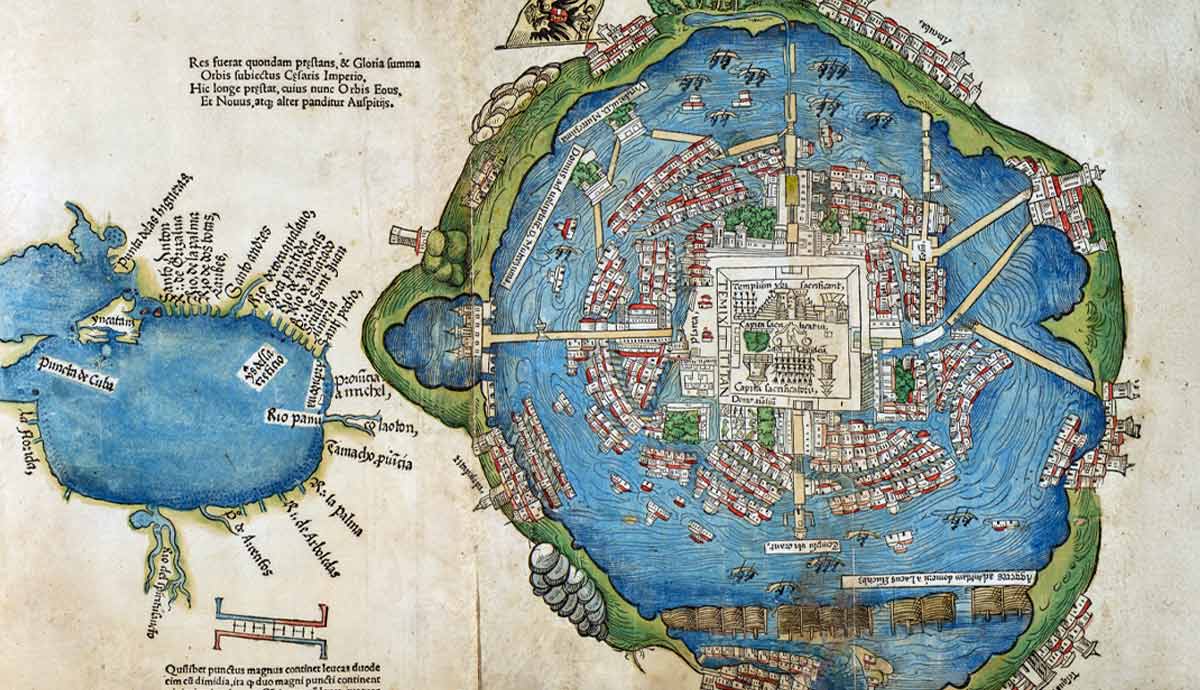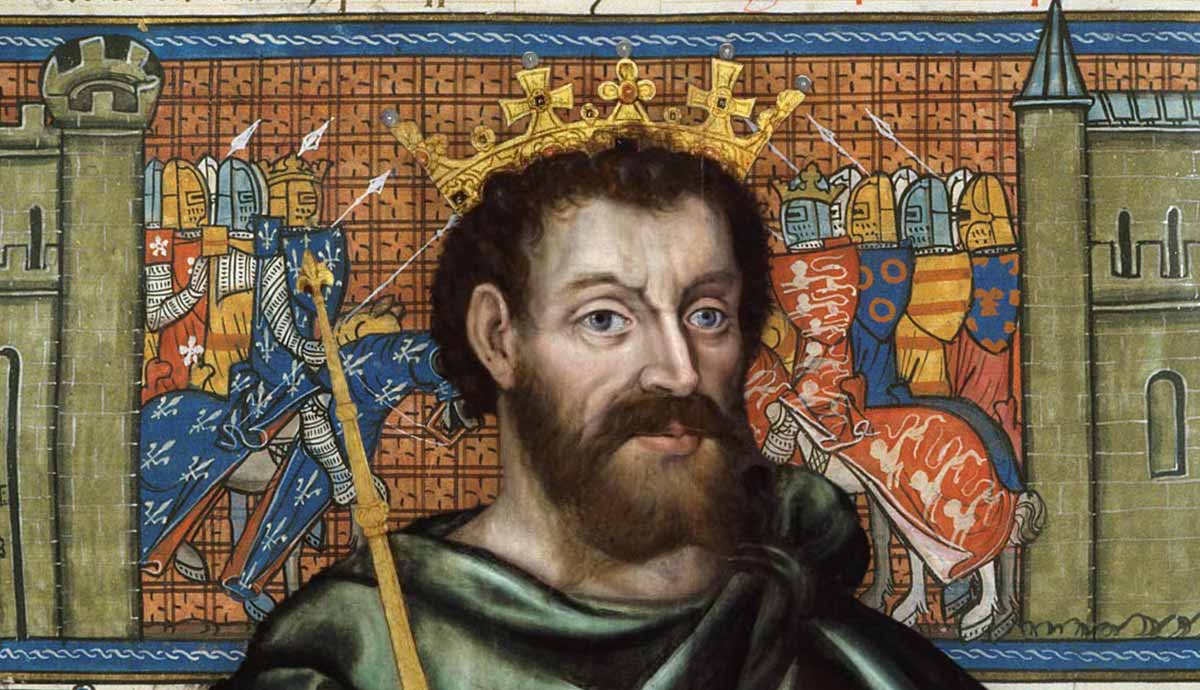
www.thecollector.com
The Primordial Gods of Greek Mythology Who Preceded the Olympians
According to Greek mythology, when the cosmos was created, it was initially inhabited by the first generation of beings known as the Primordial gods or Protogenoi (Firstborn). Many of these gods appeared fully formed at the moment of the cosmos’s creation. They personified the fundamental elements and natural forces shaping the universe’s development. Through various unions and betrayals, the Protogenoi set the stage for the next generation of cosmic rulers: the Titans and the Olympians. Read on to learn more about the first generation of primordial gods, the Protogenoi.
What Were the Primordial Gods?
The Untangling of Chaos, by Hendrik Goltzius, 1589. Source: Los Angeles County Museum of Art
The earliest references to the Protogenoi are in Hesiod’s epic poem Theogony, composed between 750 and 650 BCE. Hesiod’s Theogony outlines the origins and genealogies of the gods, beginning with the creation of the cosmos and the primordial deities and culminating with the Olympian gods. The names, functions, and characteristics of the primordials established by Hesiod have influenced the popular understanding of these ancient beings. Over the centuries, other Greek theogonies have introduced new members and added details and functions to this original generation of gods.
Unlike the later generations of divinities in Greek mythology, the primordials were typically not depicted with human forms or characteristics. Instead, they personified fundamental natural forces that shaped the cosmos and established essential natural systems. They embodied concepts such as the Earth, the Sky, the Sea, the Air, and Night and Day, among other ideas. While the primordials represented the natural world, they possessed minds of their own, with many exhibiting unique personalities, ambitions, and flaws.
Chaos, the Vast Chasm
Chaos, by George Frederic Watts and Assistants, 1875. Source: Wikimedia Commons
At first, there was Chaos. Primordial Chaos was the first being to exist when the cosmos was created. In Hesiod’s original description, the exact nature of Chaos is somewhat ambiguous. While many interpret Chaos as female, unlike other primordial beings, Hesiod does not specify a gender for Chaos. Chaos is likely a formless, nongendered entity. Unlike the contemporary understanding of chaos, primordial Chaos is often regarded as a vast void, abyss, or chasm that serves as a space or canvas for the universe to unfold upon. Chaos is usually described as the vast, endless void, but Hesiod also vaguely places it beneath the earth, above the pit of Tartarus.
Hesiod’s depiction of this formless and mysterious Chaos was later reimagined by others, particularly in the epic poem Metamorphoses by the 1st-century Roman poet Ovid. In this new interpretation, Chaos existed before the creation of the cosmos and combined all the elements that make up the universe. Ovid describes Chaos as an undeveloped mass that contains all the confused and discordant elements in one large, unruly heap. From this primordial “soup,” everything else would emerge.
Chaos is often understood as the atmospheric or lower air filling the great void. This interpretation holds some significance, as this formless deity would eventually asexually give birth to two primordial children: Nyx and Erebus. Together, they would sire the primordial upper air deity, Aether.
Gaia, the Goddess of the Earth
Gaea, by Anselm Feuerbach, 1875. Source: Central Institute for Art History
The second primordial entity to emerge after Chaos was Gaia, the personification of the Earth and the first mother. Gaia was revered as the primordial goddess of fertility, and often considered the titular Mother Earth who presided over the creation of life in all its forms. She is frequently depicted as a matronly woman from the torso up, rising from the earth she embodies. Gaia’s deep connection to the earth she embodied led to her strong association with the Chthonic deities of the underworld, and she was often worshiped alongside fertility deities such as Persephone and Demeter.
She became the mother of the next generation of primordial beings, asexually giving birth to Uranus, her husband and the first supreme ruler of the cosmos, and the Ourea and Pontus. Additionally, with Uranus as her consort, Gaia gave birth to many well-known figures in Greek mythology, including the first generation of Titans, Cyclopes, and Hecatoncheires (the Hundred-Handers).
Gaia, by Otto Greiner, 1912. Source: Wikimedia Commons
Gaia plays a significant role in Greek mythology. When her husband Uranus imprisoned their sons, the Hecatoncheires and the Cyclopes, out of fear that they would usurp him, she sought revenge by devising a plan with Kronos to castrate and overthrow him. When Uranus’s blood fell on the earth, Gaia birthed the Erinyes, the Giants, and the Meliae nymphs. Kronos proved as tyrannical as his father. Kronos swallowed his first five children with his sister Rhea to avoid being overthrown. When she had their sixth child, Rhea deceived Kronos with a stone wrapped in a blanket. Rhea then turned to Gaia for help, hiding and raising Zeus until he was strong enough to overthrow Kronos and rescue his siblings in the great conflict known as the Titanomachy.
Gaia would later come into conflict with Zeus and the Olympians. She unleashed her monstrous, multi-headed serpent son, Typhon, to defeat Zeus, but Zeus emerged victorious. Undeterred, Gaia then sent her Giant children to challenge the Olympians, leading to the catastrophic war known as the Gigantomachy. However, the Olympians’ defeat of the Giants thwarted Gaia’s plans for a second time. After this conflict, Gaia became less prominent in myths, appearing only occasionally as the mother of notable figures. These include the giants Antaeus, who wrestled with Heracles; the hunter Orion, whom Artemis killed; and the mortal Ericthonius, the founding king of Athens.
Tartarus, Prison of the Damned
Fallen angels in Hell, by John Martin, 1841. Source: The Tate Britain
The next primordial to form after Gaia was Tartarus. According to Hesiod, it would take nine days for an anvil to fall from Heaven to the Earth, and another nine days from the Earth to the depths of Tartarus. This ambiguous Protogenoi was both a deity and a physical location, not described in human form or possessing human characteristics. Tartarus is often said to be the home of many chthonic deities, including Hades, Nyx, and Thanatos. Along with his consort Gaia, Tartarus would father the monstrous Typhon.
Tartarus is often depicted as a murky, gloomy, hellish realm that consistently appears throughout Greek mythology. Its dark halls, enclosed by bronze walls and iron gates, became the prison for the enemies of the ruling gods. When Uranus imprisoned his children, the Hecatoncheires and the Cyclopes, he cast them into the depths of Tartarus. After Zeus defeated the Titans, he imprisoned many of them, including Kronos, in Tartarus.
Over time, Tartarus became the final resting place for some of the most notorious sinners in Greek myths, such as the impious kings Ixion and Tantalus and the man who cheated death, Sisyphus. However, Tartarus represented more than just a resting place; it began to resemble contemporary notions of hell, where these sinners were subjected to endless punishments as atonement for their sins.
Eros, the God of Love, Passion, and Procreation
Cupid (Eros), by Johann Liss, 1630. Source: The Cleveland Museum of Art
Eros was the final primordial being to spontaneously emerge at the beginning of the cosmos, who personified passion, love, and procreation. Eros, better known by his Roman name Cupid, is often depicted as the charming winged son and servant of Aphrodite, the goddess of love. Under his mother’s guidance, he uses his golden bow to shoot arrows at mortals and immortals, overwhelming them with love and passion for specific individuals.
Eros is typically depicted as an incredibly handsome young man or a cherubic and mischievous child, and is often said to be the youngest of the gods. Eros was married to Psyche, whose name means “soul.” Their love story has become a popular allegory representing various types of love. In several myths, Eros is depicted as the instigator of love and passion, including making Hades fall in love with Persephone and causing Helen of Troy to desire Paris. While often portrayed as warm-hearted, Eros can also be vindictive, as seen when he made Apollo tragically fall in love with the mortal Daphne after the god of prophecy insulted him.
The depiction of Eros as an agent of love is a later interpretation of one of the oldest primordial forces in the cosmos. Eros, the primordial, personifies sexual desire, love, and procreation, personifying a vast, impersonal cosmic force that ignites the spark necessary for living entities to reproduce and create new life. Without Eros’s intervention, no new life would ever have arisen.
Nyx, the Goddess of Night
Night with her Train of Stars, by Edward Robert Hughes, 1912. Source: Wikimedia Commons
With the emergence of Eros, the three primordial entities developed the desire to reproduce. The first to do so was Chaos, who subsequently bore Nyx, the personification of night. Nyx is considered one of the most powerful and respected beings in the cosmos, able to bend gods and mortals to her will, and is even feared by Zeus.
She is often depicted as a beautiful woman adorned in long, flowing black robes covered in stars, wearing wreaths of poppies, and possessing black wings. Nyx rides in a chariot pulled by black horses across the sky, accompanied by Hypnos, the god of sleep, who drives the chariot. Together, they bring the night mist after the sun god Helios has completed his journey during the day.
Nyx and her husband, Erebus, had two children, the primordial deities Aether and Hemera. Nyx would later have many more children by herself, each personifying abstract concepts such as Nemesis (Retribution), the Moirai (Fates), and Eris (Discord). Nyx resided in the depths of the underworld, where she shared her home with her daughter Hemera. The Romans associated Nyx with death, witchcraft, and dangerous magic.
Erebus, the God of Darkness
Aeneas and the Sibyl in the Underworld, by Jan Brueghel the Elder, 1600. Source Kunsthistorisches Museum
Erebus was the primordial personification of darkness. He is the son of Chaos and brother and husband of Nyx. Erebus was not depicted in human form or with human characteristics; instead, he was often envisioned as darkness within the cosmos, particularly the deep shadows surrounding the Underworld. Erebus has a minor role in the cosmos, primarily as the father of his two children, Aether and Hemera, with his wife Nyx. He was closely associated with the Underworld, and his name was frequently used interchangeably with Hades and Tartarus to refer to the realm of the dead.
Uranus, the God of the Sky
Uranus and the Dance of the Stars, by Karl Friedrich Schinkel, 1834. Source: Wikimedia Commons
The primordial Uranus personified the sky and heavens, and he was the first child of Mother Earth, Gaia. According to Hesiod, Gaia created Uranus to be her equal, covering her on all sides and serving as the heavenly home for the gods. Uranus complemented Gaia, providing her with wind and rain, which allowed her to create new life.
Uranus and Gaia had many children, including the first generation of Titans, the Cyclopes, and the Hecatoncheires. While Uranus was conceived as the embodiment of the sky and was rarely depicted in human form, the Romans later portrayed him as an athletic young man, and later artists depicted him as a bearded older man.
The Mutilation of Uranus by Saturn, by Giorgio Vasari, 16th century. Source: Wikimedia Commons
Uranus was the first supreme ruler of the cosmos. However, he grew fearful that his children might one day overthrow him. As a result, Uranus became a tyrant and imprisoned his sons, the Cyclops and the Hecatoncheires, in Tartarus to prevent any attempts at usurpation. This imprisonment angered Gaia, who conspired with their youngest son, the Titan Kronos, to overthrow Uranus. Following Gaia’s instructions, Kronos freed his brothers from Tartarus and ultimately succeeded in usurping Uranus after castrating him.
The blood spilled during Uranus’s castration rained down on the Earth, leading to the birth of the Erinyes, the Giants, and the Meliae nymphs. Kronos then cast Uranus’s severed genitals into the foamy seas, resulting in the birth of Aphrodite. Uranus faded into obscurity after being overthrown by Kronos. His final words to his son were a grim prophecy, warning that vengeance would come for Kronos and the Titans for betraying their father. This prophecy comes true when Kronos is eventually overthrown by his son, Zeus.
Ourea, the Gods of the Mountains
Mount Olympus from Larissa, Thessaly, Greece, by Edward Lear, 1850-1885. Source: The Metropolitan Museum of Art
The Ourea were the primordial personification of the mountains. They were Gaia’s second offspring, created after Uranus. In his writings, Hesiod describes how Gaia brought forth long hills, which served as graceful haunts for the goddess Nymphs who dwell among the glens of these hills. Unlike other Protogenoi, people did not conceive the Ourea as deities with personalities and minds of their own; instead, they were literal features of the landscape created by Gaia rather than mythological entities.
Pontus, the God of the Sea
Photograph of an ancient Roman mosaic of Pontus in Tunisia, by Dennis G. Jarvis, 2012. Source: Wikimedia Commons
Pontus is the primordial personification of the sea and is considered the last child born of Gaia. He is often envisioned as the literal sea itself, but is typically depicted as an older man with crab-claw horns on his head and a grey beard rising from the waters. Pontus is a minor figure in Greek mythology, recognized as the embodiment of the sea and the father of various sea deities.
Pontus’s first lover was his mother, Gaia. Together, they had several offspring, including Nereus, the father of the Nereids (sea nymphs), Thaumas, Eurybia, Phorcys, and Ceto. Phorcys and Ceto would go on to produce many of ancient Greece’s most infamous monsters. In some traditions, Pontus later marries Thalassa, the female personification of the sea, with whom he fathered all sea life.
Aether, the God of the Upper Air
Photograph of Blue Sky, by J Doll, 2008. Source: Wikimedia Commons
Aether was the primordial embodiment of the upper air and light, representing the bright, pure, and clean air found at the highest point of the cosmos. The gods and the heavens resided within the pristine expanse of Aether. Aether does not have a prominent role in mythology and is not depicted in human form. He is the son of Nyx and Erebus, and he is both the brother and husband of Hemera. Aether and Hemera are said to have given birth to the primordial sea goddess Thalassa and, in some accounts, to Eros.
In some traditions, Aether and Uranus are considered to be merged, leading to accounts in which Aether and Gaia give birth to various elemental forces such as Grief, Anger, and Vengeance, as well as the Titans, Tartarus, Pontus, and the Furies.
Hemera, the Goddess of the Day
Hemera, the goddess of the daytime, by William-Adolphe Bouguereau, 1884. Source: Wikimedia Commons
Hemera was the primordial personification of day and daylight. She was the daughter of the primordial gods Erebus and Nyx and the sibling of Aether. Hemera was envisioned as daylight itself and was rarely represented in human form. She is sometimes said to be the mother of Eros and Thalassa, with her husband Aether.
Her primary role was to disperse Nyx’s dark mist, allowing the sun to shine and light to illuminate the earth. Although Hemera shared a home with her mother, Nyx, in the depths of the Underworld, the two never resided there simultaneously due to their opposing natures. Every dawn, as Nyx returned home after her journey across the night sky, Hemera emerged, flying into the sky and dispelling Nyx’s dark mist, revealing her consort, Aether.
Hemera is often associated with Eos, the goddess of the dawn, as both personify day and the transition from night. Although Hesiod describes them as two distinct deities in the Theogony, they share many similarities. Eos opens the gates to allow her brother Helios to pass through and carry the sun across the sky.
Other Primordials
Ananke, the personification of Necessity, above the Moirai, the Fates, by Edmond Lechevallier-Chevignard, 1857. Source: Wikimedia Commons
In the centuries following Hesiod’s composition of the Theogony, several additional primordials were introduced, many of which stemmed from the cult of Orphism. Among them are Ananke, the primordial embodiment of inevitability, compulsion, and necessity, and her consort, Chronos, who personifies time. This couple emerged spontaneously at the dawn of the universe as incorporeal, serpentine beings that intertwined, breaking the world egg and giving life to the primordial god Phanes. They organized the cosmos into its various parts and governed the rotation of the heavens and the flow of time.
Ananke is regarded as one of the most powerful and revered beings in the cosmos, as she controls fate and circumstances. She is typically depicted as a matronly, serpentine woman with wings, holding a spindle. Chronos, the primordial being, and Kronos, the Titan, are often conflated into one entity and are considered alternative representations of the same deity that evolved within different cosmological traditions. Chronos is often portrayed as an older man holding a scythe and is the inspiration for the iconic figure of Father Time.
Phanes is another primordial god from the Orphic tradition, embodying creation and procreation. He was considered the first supreme ruler of the cosmos and had a role similar to that of primordial Eros, serving as the spark of creation and new life in the early days of existence. Phanes is often described as a beautiful, androgynous, hermaphroditic entity, featuring golden wings and serpentine characteristics.
Phanes, by Francesco Salviati, 16th century. Source: Wikimedia Commons
In addition to the more widely recognized primordial beings, there are several lesser-known entities from later traditions. Among these is Hydros, the personification of all water, who mingled with the earth to create the primordial mud from which all life would emerge.
Another is Physis, the personification of nature, commonly associated with Gaia. Additionally, there is Thesis, a primordial goddess linked to the act of creation, known as the mother of creation within the Orphic tradition.
The Nesoi, who personify islands, are considered the female counterparts of the Ourea, whom Poseidon moved into the sea with his trident. Lastly, Thalassa serves as the primary female personification of the sea and stands as the counterpart to Pontus.
In some accounts, the children of Uranus and Gaia, Oceanus and Tethys, are classified as primordial gods. Oceanus and Tethys personified the vast oceans and fresh water, respectively. In most traditions, they are regarded as Titans rather than Protogenoi.













